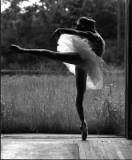
In a southern California newspaper, a report by Chris Moran says
" The College Board annually releases a report showing that the
more arts and music courses students take, the higher their SAT
scores are. Sweetwater Union High School District's survey of
its own students five years ago found that students enrolled in
visual and performing arts classes had higher grade-point
averages than those who were not. The correlation is an
admittedly chicken-and-egg argument over whether the arts make
students smarter or smarter students pursue the arts. "

A recent article in New Science Daily presents the following:
"Learning, Arts, and the Brain, a study three years in the
making, is the result of research by cognitive neuroscientists
from seven leading universities across the United States. In the
Dana Consortium study, researchers grappled with a fundamental
question: Are smart people drawn to the arts or does arts
training make people smarter?"
#8 in a series of points made is:
"Learning to dance by effective observation is closely related
to learning by physical practice, both in the level of
achievement and also the neural substrates that support the
organization of complex actions. Effective observational
learning may transfer to other cognitive skills."
MARY BELLE MCCORKLE and SHIRLEY KISER wrote in the Tucson
Citizen, "How the arts make kids smarter. Students' scores
improve in the three R's when they're exposed to music, dance
and the theater".
Betty Oliphant, former Principal of The National Ballet School
of Canada insisted on high academic standards, because she grew
up in London in the earlier 2oth Century where dancers were
considered dumb. Personally I don't think you can learn the
classics if you are dumb.
What is dumb anyway? Shyness, less-confident, dyslexic,
under-nourished? Maybe not interested in the usual social issues
and dramas?

If it were not for the internet I would not know that scientists
find this subject interesting. Artists know that they are not
less smart than scientists. They also know that the money needed
to run all these multi-university studies could run a small
ballet company for a season or two.
Scientists and artists alike need patrons - and competition is
fierce. Patrons need artists and scientists, and vice versa - so
it's a chicken or the egg situation - and it makes an
interesting holisitc picture for us all to function in.
But if your parents worry that your grades will drop if you
spend too much time in pointe shoes or the ballet class - just
mention the higher SAT scores!
About the author:
Click here for free
articles on ballet shoes, pointe shoes, The Perfect Pointe Book,
The Ballet Bible, how to get exactly the right fit, details
about turnout, pre-pointe, dance books and DVD's and more.






